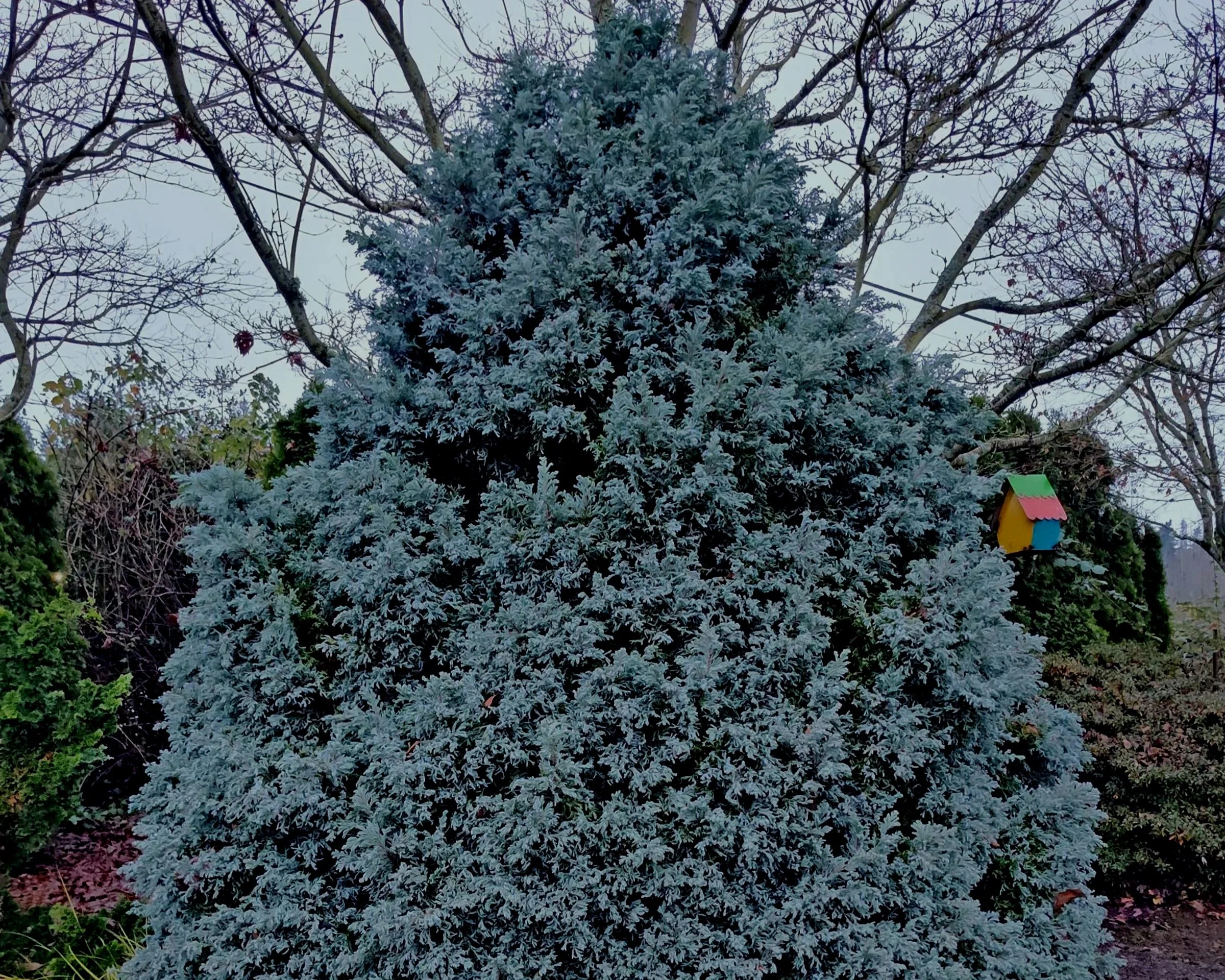One useful plant more and more local gardeners are discovering is the Mountain Laurel (Kalmia latifolia), an evergreen shrub with spectacular flowers. We are borrowing this beauty from our Eastern USA friends, a native plant they get to admire from Maine down to the Florida panhandle, with its range extending West through Appalachia into Indiana. Kalmia is the state flower for both Pennsylvania and Connecticut, and thrives throughout the region on rocky slopes, in mountain meadows, and many other native areas. These are perfect for our region as well, loving our acidic soils and perfectly complementing the plentiful Rhododendrons and Azaleas we utilize everywhere.
I want to make one point very clear about Mountain Laurels… these have nothing to do with what most gardeners think of as “Laurels.” English-type Laurels (or what we call “Cherry Laurel”) are in the genus Prunus, and folks use them as hedges both large and small. These produce small fruits that may seed here and there. Kalmia is a totally different creature and is not considered invasive whatsoever. This is a great example of why I have always claimed “Latin never lies”. While sometimes the common names that we use for plants can be confusing, I don’t expect you to memorize any botanical names, just to note that these are not the Laurels you may initially think of.
Mountain Laurel in its native range may reach small tree size, but the hybrids we enjoy for our gardens grow to about six-feet tall or so, with other dwarf flavors staying under roughly three-feet. We are lucky that Dr. Richard Jaynes from Connecticut spent decades hybridizing this wonderful plant and introduced some 40 cultivars through his Broken Arrow Nursery. I had the pleasure of meeting him years ago at a conference and I thoroughly enjoyed learning about his botanical journey, while also admiring his passion that drives him still to this day.
There are a number of good cultivars I would recommend, and these suggestions (as well as many others) are worth looking up to see the striking color combinations in each flower…
‘Olympic Fire’: Reaches 6-feet tall and wide with rose pink buds that open to lighter pink flowers with deep red markings.
‘Nipmuck’: Grows 4.5-feet tall and wide with intense red buds that open to soft pink flowers with darker pink markings.
‘Keepsake’: Averages 5-feet tall and wide with raspberry red buds that open to wine red flowers with white edge and markings.
‘Tiddlywinks’: Reaches 3-feet tall and wide, a great dwarf, with hot pink buds that open to softer pink flowers with darker markings.
‘Sarah’: Grows 6-feet tall and wide with cherry red buds that open to coral pink flowers with softer pink eye and red markings.
‘Peppermint’: Averages 5-feet tall and wide with soft pink buds that open to near white flowers with striking burgundy-red stripes and markings.
‘Elf’: Reaches 3-feet tall and wide, a great dwarf, with soft pink buds that open to whitish-pink flowers with darker pink markings.
In our region, Mountain Laurel grows nicely in full sun to partial shade and loves moist, well-drained soil. Flowering is greatly be reduced in deep shade, so be sure to give them more sun than shade. When selecting a spot, avoid clay and think “Rhododendron” except far more drought tolerant. Like other plants, be super careful not to plant these too deep or bury the crown with mulch. Leaving them slightly mounded is the way to go and carefully applying mulch up to the base will help them thrive. They will need a good watering once a week the first summer, then less over time, and once established will not need much but occasional irrigation in our drier summer months. For fertilizer, an organic Rhododendron-type granular is ideal. Apply around the dripline once in spring, as that should be plenty to keep your plant thriving. They are surprisingly cold hardy with some even thriving in USDA Zone 4 (down to -20 degrees F), quite notable for a broadleaved evergreen plant of any kind. Another bonus is their resistance to both rabbits and deer.
As with all plants I pontificate on, I try to mention how to prune them… Mountain Laurel are old-wood bloomers, so flower buds are produced on old wood over the summer, then open up the following year. These all bloom heavily in May to June, so avoid pruning them back anytime except after flowering. I doubt you will have to do much to Kalmia in all honesty, but depending on the variety and your purpose, light pruning in early summer may be helpful down the road. These shrubs are also easy to rejuvenate - if an old one is open and leggy and needs taming, feel free to break all my pruning rules and lop it off above the ground. Kalmia will sprout off of the base and gradually regrow once again, returning to specimen form over time. Once the flowers are spent, they will produce little brown seeds on the flower clusters. These can be deadheaded or left to mature, totally up to the gardener.
Mountain Laurels have great foliage, spectacularly intricate blooms, and really do add four seasons of interest. Glossy foliage is bright and evergreen, even taking on slight purplish-mahogany tones in the colder winter months. As plants mature, they exhibit lovely structure and display gnarled stems with twisting/curving branching to add interest in winter. May to June is their time to truly shine as they display clusters of buds in one color that open to another one. Individual flowers are exquisite – striped, spotted, and often multicolored, and they look like little clusters of pentagon-shaped cups. They are nectar rich and super attractive to pollinators, including hummingbirds. To me, Kalmia produces some of the most striking flowers that evolution has provided for us humans to salivate over.
I would not hesitate to recommend finding a use for Mountain Laurel in your our garden. From single specimens to foundation plants to hedging, these versatile evergreens are sure to please. They will even thrive in containers, but be sure to use an acidic potting soil (or add soil sulfur to a neutral mix to acidify it) so that they prosper. If you stop into your local garden center this time of year you are sure to see some excellent options to choose from, and you can witness their glorious blooms first hand. Speak with a Certified Professional Horticulturist about your needs and allow them to help you with tips to grow these successfully. Be sure to go soon since these are plants that are hard for nurseries to come by and once they are gone you will have to wait until next spring. Everyone should be excited about Mountain Laurel! I invite you to discover these beauties and every spring you will pause to appreciate just how fun their flowers really are.
Remember, leaves up, roots down…



